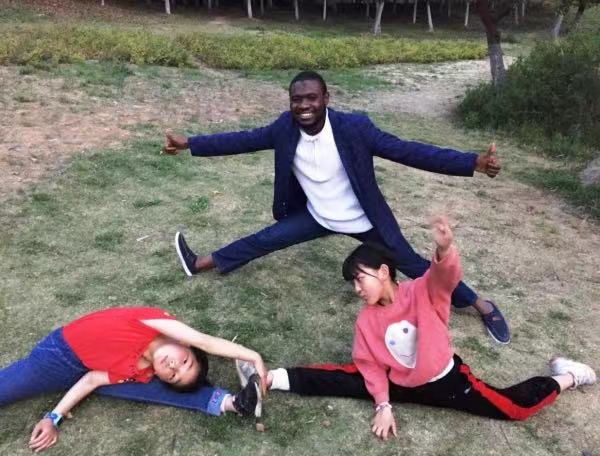scientific research everlasting pursuit

dr. omisore plays with kids during his visit to attend the 2019 vision and learning young scholars seminar in hefei. (courtesyphoto)
by chen na
from robotic research to football
it was a long journey from nigeria to china. but olatunji mumini omisore, then an mtech in computer science, undertook the journey in 2015 to enroll for his phd at the university of the chinese academy of sciences in beijing. he felt homesick at first but as time went by, he began to take to his life in china.
in 2019, he obtained his phd degree in "pattern recognition and intelligent systems", worked on the ability of machines to identify data patterns and used them to make predictions, and then headed to shenzhen, an industrial hub in south china. there he first did postdoctoral research at the institute of biomedical and health engineering, affiliated with the shenzhen institute of advanced technology (siat) of chinese academy of sciences (cas). currently, he is an associate researcher there who researches and develops new intelligent robotic systems.
life in shenzhen
when he first arrived in bustling shenzhen, omisore was worried how he would get the hang of the fast-paced metro, especially its busy metro. but three months later, he was at home, an achievement helped by the fact that he had learned to speak basic chinese. the city shaped him into a better version of himself who today is able to handle many things that at first seemed difficult.
a major challenge at siat-cas was using the lab equipment and software, since they were all in chinese. but he plodded on and learned many words in chinese and his communication skills also improved.
his supervisor suggested that he should apply for fellowships and grants to support his research. a key funding he received was the cas president's international fellowship initiative (cas-pifi), which seeks to bring different types of foreign talents to cas for scientific studies, research cooperation and exchange programs. omisore's research was on reducing cardiovascular disease mortality. in associated studies, he also developed new learning- and physics-based strategies for image-guided robotic surgery.
during the four-year pifi program, he had nearly three dozen articles published in prestigious journals or presented at conferences, notching up over 1,000 citations with an h-index of 16 on google scholar, the web search engine that indexes academic texts. he also won several awards to participate in international conferences and workshops.
current work
currently, omisore is working on several projects on flexible surgical robots and artificial intelligence. he says this provides a solid platform for him to gain diverse academic and professional experience to work independently as well as learn to be a smart leader and an effective team member.
working at siat-cas means frequently staying up late in the lab, but living in china also offers many perks like indulging his passion for football. a competent winger, he plays in inter-school football tournaments regularly.
this article is contributed by siat.
